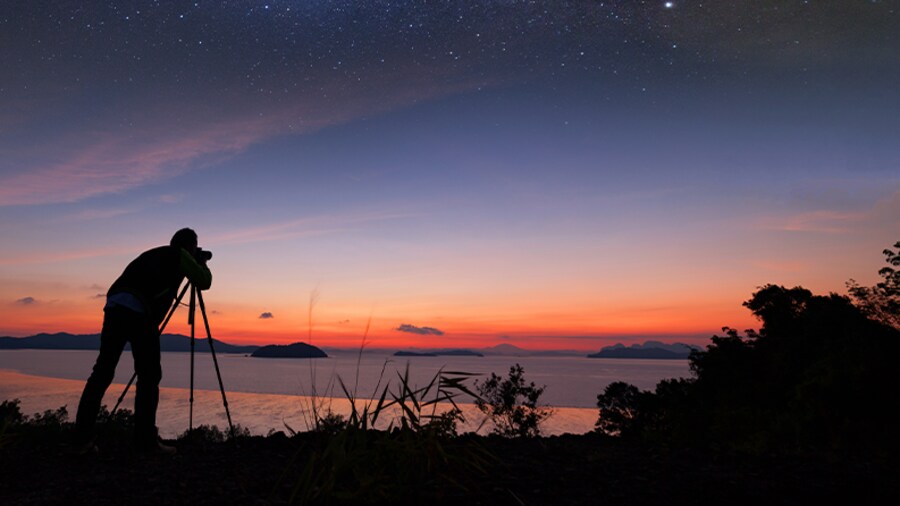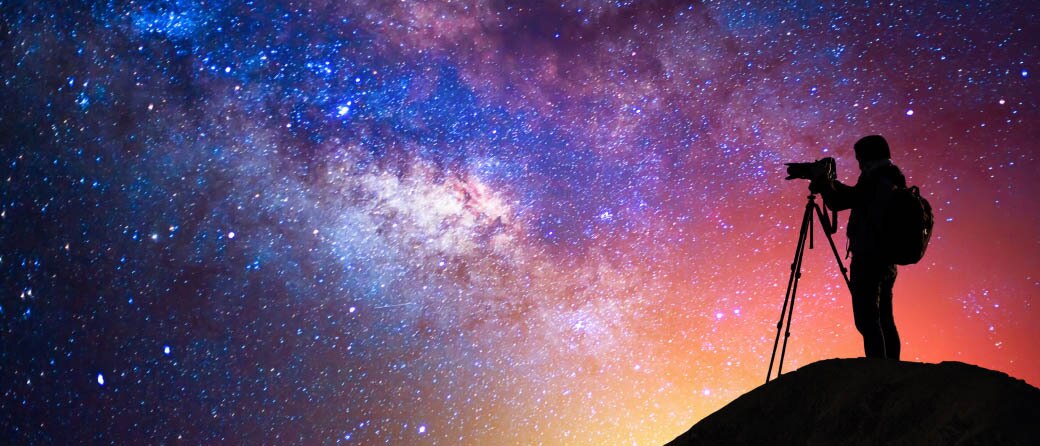The Check-In Home / 3-Minute Expert

![]()
Nighttime photography tips for your next trip
Get ready for a million Instagram likes
We asked Stacey Leasca, photographer and professor of visual journalism at USC, for her tips, tricks, and favorite apps for capturing photos of nighttime skies. Here’s what she had to say:
There’s nothing more inspiring than the sky at night. Each star glimmers with hope, intrigue, and a sense of limitless possibility. All of this is why I love photographing the night sky whenever the clouds part in a new destination. Of course, photographing the stars is no easy feat. It takes a bit of practice, luck, and excellent timing. But there are a few tips you can follow to increase your odds of snapping a photograph of the heavens that you’ll treasure for a lifetime. 
Plan your trip accordingly
If capturing the night sky is on your next vacation itinerary, it’s essential to pick a destination that is amenable to this dream. The darker a place, the better the photo. Choose dark sky destinations that are a bit out of the way from the hustle and bustle. The International Dark Sky Places currently lists more than 130 international places on its interactive map, including domestic destinations like Joshua Tree National Park in California, Big Cypress National Preserve in Florida, and Great Sand Dunes National Park in Colorado. Just remember to also time your getaway correctly. A full moon will ruin a shot, so plan your travels around a waning, new, or waxing moon.
Use the right equipment
Having the appropriate gear will make capturing the night sky a breeze. This includes having a camera capable of capturing RAW image files, and comes with manual controls. Sorry, but automatic settings just won’t do. For example, taking a photo of the Milky Way at night will likely require a good 20-30 seconds of exposure time, so having a camera with a “bulb” setting for long exposures is a must.
Beyond a camera, night photographers should also have a tripod on hand, as well as a remote control for their camera to ensure it stays steady long enough to capture the scene. Then, the more time you invest in photographing the stars, the more you can also invest in equipment like star tracking devices and editing programs like Lightroom or Photoshop.
Download all the right apps
Love to take night photos? There’s most certainly an app for that. Tracking the stars can be tricky business, but apps like PhotoPills makes it just a bit easier. The app allows users to turn on “night AR,” which will give them a preview of the night sky and star positions, so they can plan their adventures well in advance. The app Photo Ephemeris comes with a similar set of planning tools and even includes a line-of-sight analysis so users can feel confident nothing is standing in the way of their perfect shot. (And, of course, don’t forget the Expedia app to help you plan the perfect dark sky trip.)
Be patient
Like everything in life, night photography takes practice. It includes plotting out the right destinations, planning journeys around the shifting of the stars, getting up in the middle of the night, and praying there is no cloud cover above. Even when you feel defeated, it’s important to remember to keep going so you can go home with a night sky picture worth way more than 1,000 words.
This month's articles:
-4.png?impolicy=fcrop&w=900&h=386&q=mediumHigh)
Stargazing Destinations
-3.png?impolicy=fcrop&w=900&h=386&q=mediumHigh)
Dazzling City Views
.png?impolicy=fcrop&w=900&h=386&q=mediumHigh)